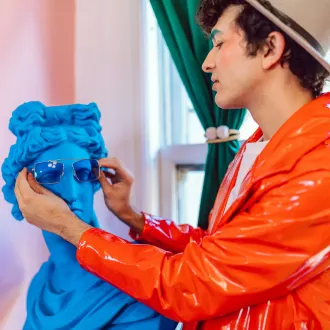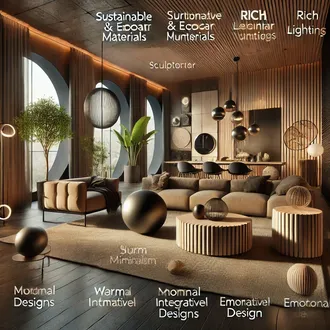Transcription Styles in interior decoration (I)
The organization of interior spaces is a practice linked to the origin of the human being, however, it was not until the last centuries that the needs of comfort, social development, and the emergence of artistic movements accelerated the functional and aesthetic development of our environment, reaching our days with very diverse and intermingled forms or styles.
The style is the set of characteristics that broadly unify or distinguish the artistic trend of an era, a genre or an author. Styles are in constant evolution and transformation, so it is impossible to characterize them in an exact way.
In this presentation we will refer in a general way to some of the most outstanding features of the most popular styles in interior decoration, with the purpose of providing you with a reference to start your way and a compass to find new creative routes that will help you to devise more and more aesthetic and original solutions.
Classic Style
The classical style originated in France in the 17th century, inspired by the art of ancient Greece and Rome. It quickly spread throughout Europe, acquiring in each country its characteristic features despite its strict rules.
The classical style is characterized by the use of columns and cornices; the furniture is made of precious woods, ornamented with gold details and generally rectangular shapes; the decorative complements are bronze and marble sculptures, columns, arches, etc., arranged symmetrically. For lighting, chandeliers are used on the ceiling, while in other spaces bronze candelabras and torches are placed.
Olive green, light green, beige, cream and gold colors are usually used on the walls, while sand and pastel colors are frequently used for the upholstery. Nowadays, few people decorate their homes using the pure classic style, generally a variant called "renovated classic" is used, which uses white to lower the tone of the walls and introduces some modern furniture to give a renovating touch to the spaces.
Romantic Style
It originated between the 30's and 90's of the 19th century; it is a style inspired by the French countryside. It is identified by the use of flowers, pink colors, fresh and contemporary spaces.
Romantic furniture is of baroque and rococo style, generally in light tones or painted white. Flowers appear in the spaces, either naturally in vases, preferably ceramic or printed in cotton. Decorative accessories can be pieces of art, candles and also books, mirrors and decorative vases.
Nowadays it is not considered mandatory to have luxury pieces to achieve a romantic style, it is enough to use floral elements, mirrors and furniture with attractive curves. Page break
Modern Style
It emerged at the end of the 19th century, with the Industrial Revolution and developed during the first half of the 20th century, reaching its popularity between the 40's and 60's of the last century with roots in German and Scandinavian design. The essence of this style in interior design is basic shapes and minimal decoration.
The modern style is characterized by the use of new materials in the manufacture of furniture: plywood, metal, plastic and glass; modern furniture has basic forms without ornamental parts, but very functional and attractive.
Modern architecture advocates large interior spaces, so it uses as few walls as possible and the spaces are delimited with furniture and enlarged with lots of light and a natural color palette with emphasis on white and beige, using intense colors only on small surfaces to help break the monotony of neutral tones.
Art Deco Style
The Art Deco style emerged in France at the end of the first decade of the twentieth century, reaching its popularity in the U.S. around the 1920s, 1930s, and 1940s. It left its influence not only in architecture and interior design, but also in sculpture, painting and graphic arts. The essence of the Art Deco style is to emphasize the decorative rather than the functional.
Art Deco is characterized by the use of geometric shapes; the use of a single color in the spaces, combining its tones and brightness to achieve contrasts; distributing many ornaments in the spaces; using ornaments such as pearls, glass, oil paintings, sculptural lamps and mirrors.
The furniture is made of exotic woods and has perfect glossy
interior style 1




